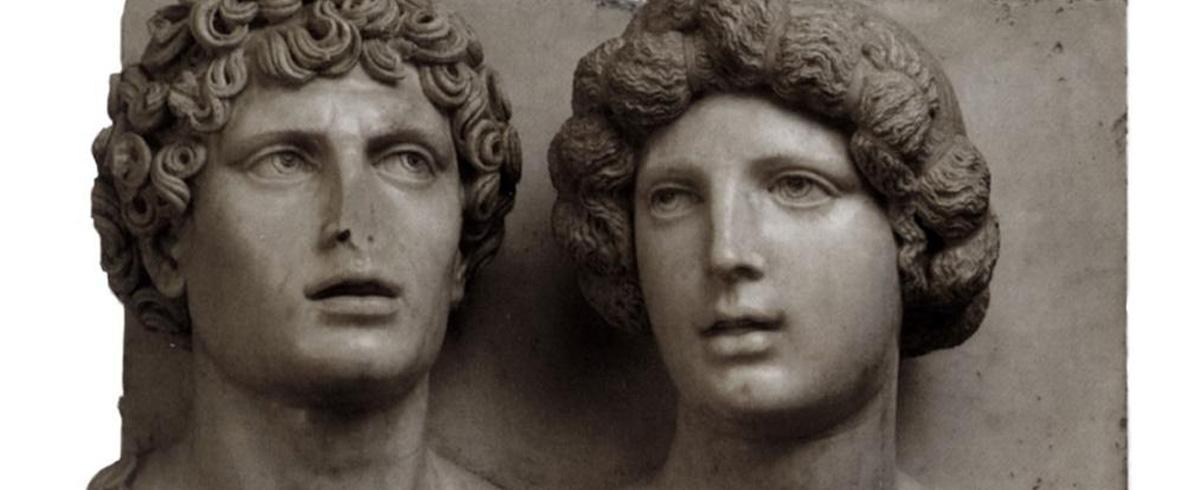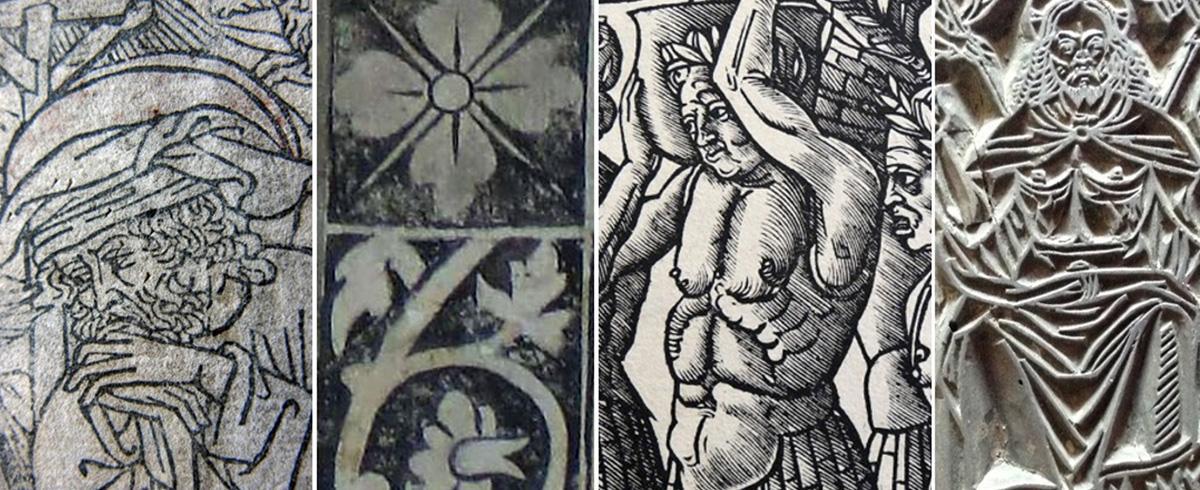Istituto di Storia dell'Arte
Director
Luca Massimo Barbero
Secretarial office
tel. +39 041 2710230
fax. +39 041 5205842
e-mail arte@cini.it
Digital photo library
tel. +39 041 2710440/ +39 041 2710441
fax +39 041 5205842
e-mail fototeca.digitale@cini.it
Cardazzo collection
tel. + 39 041 2710270
fax + 39 041 5210642
e-mail fondo.cardazzo@cini.it
Access to the Archives.
Consultation may be made by appointment.
The Atlases contain subjects focused on by specific projects and research activities carried out by the Institute of Art History. They consist of catalogues and photographic collections that can be consulted online.
The images attached to the entries come from the Istituto di Storia dell'Arte photographic collection and the archives of other institutions on the basis of agreements made for each project.
Institute of Art History
Atlante delle Xilografie italiane del Rinascimento
L'Atlante delle xilografie italiane del Rinascimento (The Census of Italian Renaissance Woodcuts) is the result of a research project designed to study and catalogue woodcut graphic material and wood blocks made in Italy from the time of the first known examples up to about 1550.
This involved examining singe-sheet prints and wood blocks preserved in public and private collections or still in their places of origin, such as churches and convents.
The digital archive can be consulted using various search keys. It has constantly updated images and files and is linked to the major international databases in the sector.
The aim of the project and of the Digital Archive is also to be a reference point for the study of Italian woodcuts by creating an active and updated network involving art historians, woodcut experts and the institutions that hold the materials surveyed.
We invite you to contact us at italianwoodcuts.census@cini.it to inform us about new items to be catalogued, to supplement and correct the information provided in the entries, to explore topics together and to let us know about any new publications.
In 2021, the project benefited from a prestigious grant from the Getty Foundation of Los Angeles as part of The Paper Project: Prints and Drawings Curatorship in the 21st Century, which finance training, curating, cataloging of graphic materials. In 2022, the Census of Italian Renaissance Woodcuts also received funding from the International Fine Prints Dealers Association (IFPDA) to support research and cataloging.
Materials in the catalogue entries
Woodcuts on single sheets and in books are the Cinderella of engraving studies, a discipline that has seen some major but discontinuous research in Italy. The first and most obvious result of the Digital Archive has been the salvaging of previously unknown or little-known works of art, scattered in the most disparate places. The rarity and fragility of the materials makes their recovery desirable also for the purpose of safeguarding them.
These hitherto "invisible" (several were even unknown in the literature) contain precious information that enhances our knowledge of Renaissance art. Firstly, from the point of view of the history and evolution of style for which we know that during the early Renaissance the principle of the unity of the arts reigned in artists' workshops and the great masters resorted simultaneously to various artistic practices, also providing designs for the new art of engraving in all its forms. Moreover, an atlas of images that can be compared enables us to suggest areas of figurative production and groups of stylistic families, creating new artistic identities or enriching the catalogue of masters and known monogrammists.
The rediscovery and study of these woodcuts also contributes to knowledge of religious and secular customs and, more generally, to the history of Renaissance culture by shedding light on the interweaving of learned and popular culture, the frequent presence of texts, and the variety and originality of the subjects of the sheets (official and apocryphal Gospels, lives of saints, historical events, medicine, magic, games, satire, geography and portraiture).
Instructions for consultation
Each woodcut is assigned a code, i.e. the identification number of the census preceded by the prefix 'ALU.' (acronym of Aldovini-Landau-Urbini): for example, ALU.0700. In the case of wood blocks, the number is followed by '-M': for example, ALU.0290-M. In the case of several copies of the same print, the number is followed by '.1, .2, .3
': for example, ALU.0290.1, ALU.0290.2.
The order for the bibliographic citation of an entry is:
Name of the author of the entry, Atlante delle xilografie italiane del Rinascimento, acronym ALU followed by the relevant number, permalink
For example: L. Aldovini, Atlante delle xilografie italiane del Rinascimento, ALU.0001.1, permalink, ISBN 978-88-96445-24-2.
italianrenaissancewoodcuts.com
Atlante della statuaria veneta da giardino
Ornamental garden sculptures are a commonly found artistic phenomenon in the Veneto. Created over a long historical timeline, they are widespread in the region. They have, however, only received little attention in art history literature, or even in the specialist literature on historic gardens. This seems to be completely unjustified considering that garden statues are often the work of leading artists which connote and are representative of the locations they were intended for. Moreover, they reflect the standards of the civilisation and culture producing them. The promotion, study and photographic documentation of this invaluable heritage is a necessity and duty, especially considering the nature and location of the works, inevitably subject to the ravages of time or even reprehensible human neglect.
The garden statues found in Venetian Villas are obviously an inevitable and prominent subject of enquiry, especially those from the 16th century on, because of the extraordinary number of works, the role of major artists and the variety and originality of the subject matter - ranging from mythological divinities to allegorical figures, but also "character" portraits and figures from Commedia dell'Arte. No less important is the presence of Veneto garden statues in other regions of Italy and abroad. Many of these exemplary works were directly commissioned from Veneto artists in the 18th century, such as the decoration of the Bonaccorsi Gardens at Potenza Picena, Macerata (with works by Orazio Marinali and Giacomo Cassetti), the Nymphenburg Gardens in Munich (Giovanni Marchiori), the Grosser Garten, Dresden (Antonio Corradini) the Summer Gardens, St Petersburg, and the grounds of other Imperial Russian residences. To these we must add further series of sculptures originally for gardens in the Veneto, which then "emigrated" to other Italian regions or abroad in the 19th and 20th century.
The creation of the Atlas of Veneto Garden Statues was based on a census of the works through specific photographic surveys, research activities and systematic cataloguing. Accessible online, the atlas supplies a catalogue entry and photographic documentation for each individual garden sculpture, consisting of images from photographic surveys and in some cases "historic" photos, when they have been found. At times the catalogue is supplemented by secondary entries providing further information about any related works (drawings or bozzetti, replicas, copies, etc.). The atlas thus not only "records" evidence of surviving garden statues but at the same time is a useful instrument in furthering knowledge and study.
Latest developments from research on the subject are periodically published In a specific section of the magazine Arte Veneta.
Opere di Tullio Lombardo
This "Atlas" devoted to sculptural and architectural works by Tullio Lombardo and his family workshop is an online resource providing as many photographs as possible of the same statue, bas-relief, ornamental item, palazzo or religious space. The photographs are accompanied by a concise information sheet containing key physical data, location and main historical references.
The main feature of the Atlas is that it has several images of the same subject. They range from paintings, drawings, engravings and casts from before the advent of photography up to digital photographs taken on specially conducted surveys. These were carried out not only to partly obviate the inevitable relativism and subjectivism characterising almost all two-dimensional reproductions of three-dimensional plastic works and especially of architectural spaces. They were also a way of ordering the survey material into a historical sequence that narrates the history of the use of the object, its iconographic tradition and, equally importantly, that of its state of conservation, at least over the 150 years since the invention and circulation of the camera. In short, the underlying conviction is that only through a wide selection of photographs can the original uniqueness of the subject be evoked. In addition to the images already held in the Fondazione Giorgio Cini photographic archives (the original core of this catalogue), the Atlas brings together photos from various local, national and international archives, including those of the superintendencies, the Venice Civic Museums and universities. The archives that have until now supported the work are the Böhm Archive, Save Venice and the Venetian superintendencies. A copy of the photographic archive of Anne Markham Schulz and Mario Polesel (Fotoflash) has also been acquired.
Lastly, a photographic campaign on the works of Tullio Lombardo was conducted by the students in an ESF course taught by Alessandra Chemollo at the IUAV in the 2006-2007 academic year.
It is the hope of the Fondazione Cini, patron and host of the Lombardo Committee, that making available the huge quantity of information in this photographic archive will encourage a return to studies and mark further interest in the work of the great Venetian sculptors.



